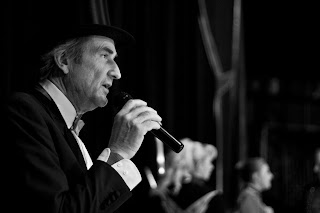In order to study all aspects of history and memory making in both personal and national contexts, I have selected a wide range of audio-visual materials that I plan to use in my research. Here are the three most important ones.
Oral History Archive of the KITLV, Interviews about the Netherlands East Indies.
These interviews, recorded, collected and summarized in a publication by Fridus Steylen are an important source of data for me because they can provide me with the information that is not present in the photographic collections I will be working with. Doing research into the photographic representations of cross-national relationships during wartime inevitably means that there is a good chance many romantic or platonic encounters with “the enemy” were never recorded, photographically or otherwise, because it was a sensitive subject and there could be severe consequences if anyone found out. Also, photographic collections and archives are not a static product that represents the whole historic truth, but are subject to social and political changes throughout their lives. Many objects may be lost, discarded, ignored, or forgotten and no longer available or accessible for whatever reason; looking simply at photographic material is not enough to formulate a complete analysis. The interviews contain personal accounts that may go beyond the stories represented in the archives, and tell the stories that were too taboo to record, but remain silently preserved in the memories of the interviewees. Such an audio source is highly valuable when researching national and personal memory of a time of conflict.
Romanticized stories of war-time friendships
Oeroeg is one of the most well known films about the Dutch East Indies, and tells the story of a Dutch boy and his Indonesian friend Oeroeg. As they grow older, and conflict arises, the two friends grow apart and end up fighting for opposing sides. They eventually meet again, and despite the conflict and the complexity of the situation, their friendship remains pure. Both men are portrayed as honorable, likeable characters that the audience can relate to.
Such romanticized stories of war time, in which the main characters are heroic men fighting for a good cause are by no means an accurate reflection of real war-time relations. Many men (and women) did un-heroic, cowardly things. Some joined the NSB, some refused to hide their Jewish neighbours from the Nazi’s, some stood by idly as they watched others suffer. In times of extreme violence and extreme living conditions, people are rarely heroic. People tend to act in a way that ensures their survival before helping any other. These romanticized stories of friendship reflect a national need to portray people as inherently good, to argue that terrible acts are only done by terrible people, and that we are, in the end, inherently good. On a national level, we suppress the complexities of war-time relationships because we need to feel like we are good people, like we did the right thing, and like we were all the same victims together. Such romanticized stories provide me with the other side of the remembrance of war-time cross-national relationships to those the interviews tell me.
Photographs from the Online Beeldbank of the NIOD.
These photographs represent the aspects of cross-national social encounters that were recorded and are allowed to be remembered. They include professionally produced photographs of women who had their heads shaved for engaging in romantic relationships with German men as well as personal snapshots of Canadian soldiers with Dutch girlfriends. These photographs show the official, shameful side, as well as the friendly relations with allies that were openly photographed. Photographs of Dutch women together with their German lovers, however, are not so widely available in the archives. Most photographs depicting couples are of French or Dutch Girls with American and Canadian soldiers; with allied men, rather than those fighting for the opposition. The photographs showing the bald women prove that these relationships did exist, but the prevalence of allied-relationships over those with soldiers from the opposition also reflect the way we would like to remember the war, rather than the way it actually was. The photographs of bald women prove that Dutch women did not only find comfort with Allied soldiers, but these relationships with Germans are not part of our visual history; a reflection of history as a construction of the present. These photographs form the connection between personal oral histories and national meta-narratives about cross-national relationship in times of war.






















